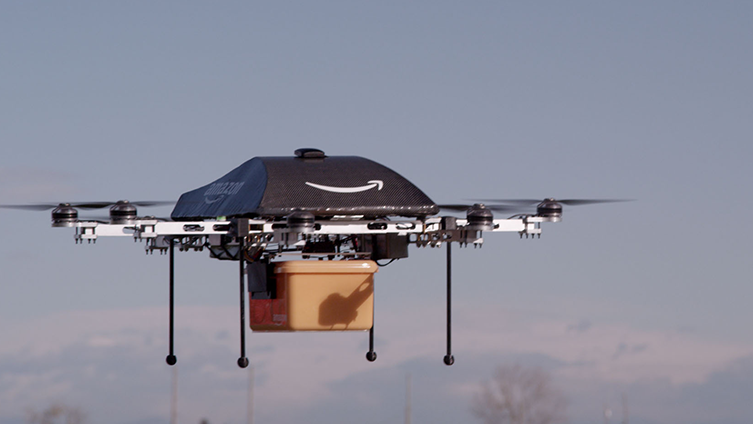Amazon will soon take-off with US Prime Air deliveries

Amazon edges closer to their drone delivery service becoming a reality.
When we think of drones, we often think of them as one entity, but the spectrum is wide and varied. We’d be forgiven for thinking only of the ones whirring above our heads, bringing airports to a standstill, peeping through our windows and raising endless questions about privacy, legality and regulation.
Drones as a Service
Drones have many current uses beyond those of hobbyists. So long as regulation allows it, there are many commercial applications for them; in the media industry, transport, surveying, inspection and soon delivery.
After stating in June that they were just months away from delivering packages in under thirty minutes, Amazon’s plans to provide a commercial drone service by delivering goods purchased through the online retailer’s site have recently gained a much-needed boost.

Last week, the University of Alaska completed its first beyond-visual-line-of-sight (BVLOS) test, using Iris Automation’s onboard detect-and-avoid systems.
This event marks the first time the United States government’s civil aviation regulator, the Federal Aviation Administration (FAA), have been confident enough to look at green-lighting the technology for future use.
The previous ruling, that a drone must fly within the operator’s line-of-sight at all times, now looks set to be overturned with this successful first flight. This presents a huge opportunity for possible commercial applications in the US and marks an important milestone in the future of drone services.
In a press release, Iris Automation CEO and Co-founder Alexander Harmsen said: “This is the first time detect and avoid technology is approved by an aviation authority…We’re grateful for the FAA’s continued push to recognize and understand how these technologies will enable the successful and safe integration of UAS into our lives and businesses.”
In the European Union, regulations aren’t as strict as those issued by the FAA. Amazon’s Prime Air has already undertaken numerous test flights across the continent and appears closer than ever to a full-scale rollout. But regulatory bodies still stand in the way of progress no matter the place, and those in the drone industry are well aware of this fact, working with government and aviation industry regulators.
As a nascent technology, drones as a service have a few hurdles to clear before they become commonplace. However, having these regulations in place will allow for safer operations. By ensuring safety is prevalent in every aspect, consumers will come to trust and accept drones as a service, eventually allowing services like Amazon Prime Air to take-off once and for all.
